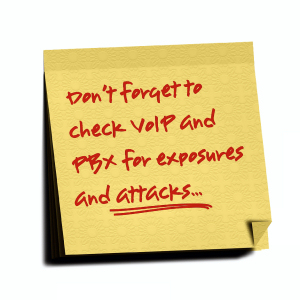This month’s Touchdown Task is to take an hour and give your phone system security a quick review. PBX hacking, toll fraud and VoIP attacks remain fairly common and many organizations don’t often visit the security of their phone systems. Thus, a quick review might find some really interesting things and go a long way to avoiding waste, fraud and abuse.
If you have a traditional PBX/analog phone system, here are some ideas for you to check out.
If you have a VoIP-based system, here are some checks to consider. (Note that this is a STIG in a zip file).
Generally speaking, you want to check passwords on voice mail boxes, give a look over to make sure that the phone system has some general logging/alerting capability and that it is turned on. Pay attention to out going dialing rules and test a few to make sure arbitrary calls can’t be made remotely. On the personnel side, make sure someone is actively monitoring the phone system, auditing the bill against “normal” and adding/deleting entries in the system properly.
Give the phone system a bit of your time. You never know what you might learn, and you might avoid tens to hundreds of thousands of dollars in fraud and abuse.
Thanks for reading and I hope you are enjoying the season!

